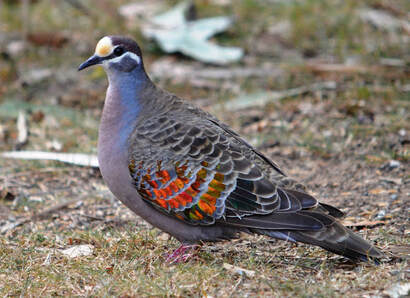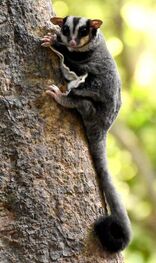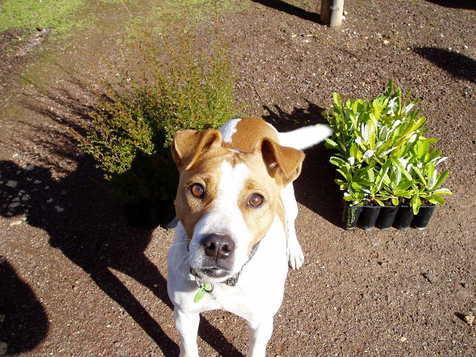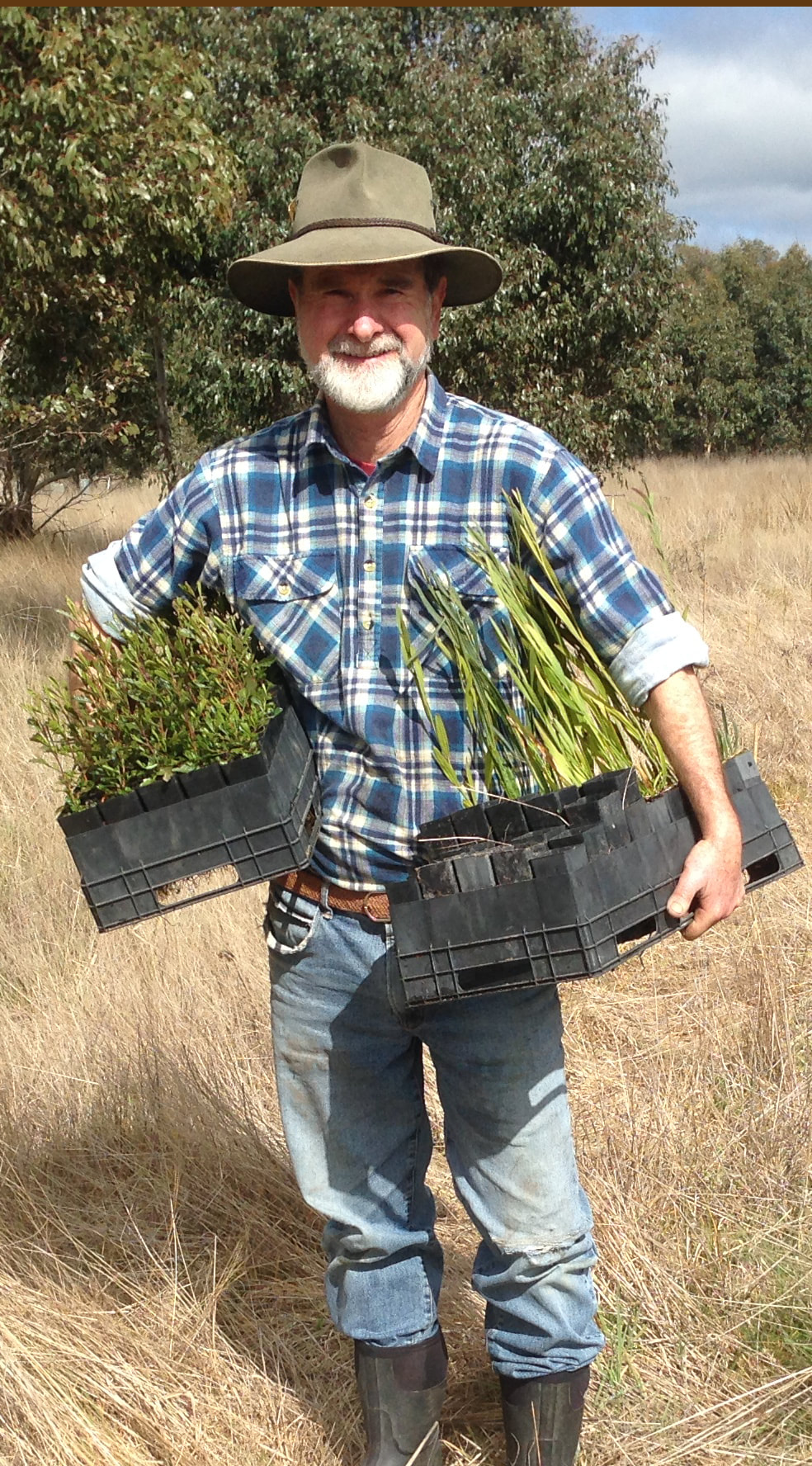Recreating the Country blog |
 Black Wattle is a very hot firewood, ideal for cooking pizza in a wood stove Black Wattle is a very hot firewood, ideal for cooking pizza in a wood stove Black Wattle, Acacia mearnsii Turning up the heat. Our first home in country Victoria had an old IXL 72 wood-stove. These wonderful cast iron stoves were made in Geelong, which was very handy when I needed replacement parts for repairs. It became the focus of our cosy kitchen environment, providing winter warmth as well as hot water. Many an evening I sat in front of that stove after a cold winter’s day in the nursery. The firebox door open, the fire crackling, the flames flickering and my cold feet parked in the open plate warmer under the oven. Heaven! The point of this recollection is that the old stove also made amazing pizza when fired-up with Black Wattle firewood. The stove would glow with the heat and would have to be cooled by adding eucalypt firewood once the pizza was cooked. This was to avoid burning-out the metal firebox Burning Black Wattle made the stove far too hot to sit near and the intense radiant heat could be felt on the other side of our open-plan kitchen. It was the hottest firewood we burnt by far. Hotter than River Red Gum and Sugar Gum which are both very popular hot burning firewood’s. Commonly pronounced - mare-n-see-I. The origin of this name isn’t clear but may come from a district near the Grampians in Scotland called Mearns. Black Wattle is indigenous to the Victorian Grampians (as well as southern Australia and Tasmania). Note: The Grampians is now called Gariwerd, the traditional name of the Djab Wurrung and the Jardwadjali people. Gariwerd means a pointed mountain shaped like a nose.  Black Wattle bipinnate leaves and pale yellow pom-pom flowers Black Wattle bipinnate leaves and pale yellow pom-pom flowers Some human context – many uses One of the fastest growing plants that I have had the pleasure of planting on farms is the Black Wattle. If growing fast was an Olympic event for trees then the Black Wattle is the Usain Bolt of the tree world. I remember saying to customers with the certainty of experience, ‘plant a Black Wattle today and harvest a tonne of firewood in 5 years'... and I wasn't exaggerating. It’s not unusual for a Black Wattle to reach 1-2 meters tall in twelve months and 8m in five years. At maturity it can reach well over 10m tall and wide. Black Wattle will start to senesce (die back) after 15 years though they can remain healthy for over 20 years in well drained loamy soils. In heavy clay soils they tend to be smaller and much shorter lived.  Typical early growth of a Black Wattle. This plant is only 10 months old Typical early growth of a Black Wattle. This plant is only 10 months old It's remarkable growth rate has other benefits/uses. In forestry, growing valuable timber species in frosty locations like Spotted Gum, Corymbia maculata and Sugar Gum, Eucalyptus cladocalyx is very difficult. Just a couple of mild frosts will kill them. So it’s the frost hardy Black Wattle to the rescue, planted as a ‘nurse’ tree one year in advance. In one year Black Wattle will provide enough shelter to protect a frost tender seedling planted close by under its leafy canopy. A few years later the Black Wattle is cut off at ground level when the frost tender tree is big enough to manage on its own (usually over 2 m tall). Cutting off the wattle also releases lots of nitrogen from its roots, feeding and accelerating the growth of the timber tree. Click here to read about Black Wattle timber used for flooring and lining boards in a unique 'green wood' slab hut at Lal Lal, Victoria I have a friend who has milled the timber from mature Black Wattles to make lining boards for his pantry. The boards are a beautiful dark red-brown colour (click here to see a sample of the wood). Cutting and drying them for this purpose is a bit tricky as they have a tendency to crack and twist. In 2005 an Australian Government trial tested different hardwoods for their potential as treated vineyard posts. It found Black Wattle was one of the hardest. It showed a lot of potential though splitting again was a disadvantage that needed to be overcome. Click here to read about this trial See this link to a light and funny story about black wattle lining boards - Richards Sweet rewards Australian Black Wattle is also grown as an important crop in South Africa. There they remove the bark to produce tannin for the leather industry. It was also in demand for its tan-bark in Melbourne's early years when leather products were in demand. The Tan, a scenic walk around the Melbourne Botanical Gardens, gets its name from wattle tan-bark. In Melbourne, tan-bark was reused from the many tanneries (mostly Black Wattle) to provide a clean walking surface around the Botanical Gardens and Melbourne’s muddy streets, churned up by bullocks, horses and carts. South African crafts. Here are some intriguing ideas for the use of Black Wattle wood in craft and making tannin dyes from a South African craft person. Australian Black Wattle has been grown commercially in South Africa for over a century for its tannins. https://auntieclaras.com/2021/11/black-wattle-tannin-soap/  Kino/Wattle Gum. Natures gobstopper Kino/Wattle Gum. Natures gobstopper The Traditional Owners of the southern regions of Australia ate wattle sap as an source of energy. The oozing Black Wattle sap/gum, called kino, forms into soft round lumps on the side of large branches and the main trunk. It's natures original gopstopper which can be pulled off and eaten as an energy rich food. It's quite chewy and has a subtle sweetness that is very enjoyable.  A Common Bronzwing Pigeon, Phaps chalcoptera, searches for Black Wattle seeds on the ground A Common Bronzwing Pigeon, Phaps chalcoptera, searches for Black Wattle seeds on the ground Nature notes In nature Black Wattles provide a range of goods and services for wildlife; Bronzewing Pigeons are often seen searching for wattle seeds under Black Wattles. For them they are an important source of protein, valued also by cockatoos, rosellas, parrots and wattlebirds. I have often watched with delight, a Grey Fantail darting from a Black Wattle canopy. These agile small birds provide a wonderful acrobatic display as they fill their bellies with flying insects attracted by the wattle’s foliage. A Melbourne study identified sixty species of moths on wattles generally and they are also an important food plant for butterflies. Long-billed Corellas & Sulphur Crested Cockatoos will litter the ground with Black Wattle leaves as they nip them off to feed on the sweet sugary sap. This flows at flowering times to attract birds that spread the wattle pollen on their wings. These birds unwittingly provide a pollination service for the wattle tree. Honeyeaters and thornbills are also lured by the promise of a sweet drink. They lick the sap as it oozes from small glands located along the centre spine of the Black Wattle’s ferny leaf. Ants, native bees and wasps are also attracted to the sugars produced by wattle glands during flowering. The aril attached to the wattle seed is rich in polyunsaturated oil. This attachment is designed to attract ants that carry the seeds away and bury them underground. This is the ideal place to store the seed where it will last for centuries in this cool dark environment. Until... the scratching and digging of an echidna around the ants nest disturbs the buried seed. This disturbance brings the seed to the surface and prepares it for germination following a good rain.  Sugar Gliders 'milk' wattle sap from Black Wattle trees Sugar Gliders 'milk' wattle sap from Black Wattle trees Attracting Sugar Gliders to your garden or plantation Sugar Gliders are in greater density when there are more Black Wattle trees. The gliders scratch the wattle bark and ‘milk’ the oozing sap. This sap is a rich source of energy, critical to the survival of glider family groups. So much so that they hotly defended their wattle trees from other gliders. Gliders eat an estimated 3+kg of insects/year, so they can be an important agent in the control of insect numbers. To attract gliders to your property, provide some suitable tree hollows (or boxes) for them to sleep in during the day and large Black Wattle trees to feed in at night. Other large wattles that can feed hungry Sugar Gliders are Blackwood, Acacia melanoxylon; Silver Wattle, A. dealbata and Lightwood, A. implexa. There will be other large wattle species local to your area that may also be suitable for Sugar Gliders. Click to this article to read more on developing Sugar Glider habitat  Three year old Black Wattle and already 5 meters tall. The plants around it will start to become water stressed Three year old Black Wattle and already 5 meters tall. The plants around it will start to become water stressed Black Wattles and other plants All wattles fix atmospheric nitrogen in the soil. This benefits neighbouring plants as long as they can access enough soil moisture. Wattle ground covers and shrubs can be an asset in a garden providing this nutrifying benefit. Though survival for other plants growing near mature Black Wattles becomes a supreme struggle. Their root systems tenaciously suck-out all the available soil moisture around the tree, particularity in dry seasons. This eventually can become a bare zone under the tree where only the toughest shade tolerant native shrubs, grasses and lilies will grow. In 50+m wide sustainable biodiversity (biorich) plantings, Black Wattles are planted in small clumps of 5-10 trees/clump. These clumps can increased to 50 if the wattles are being grown to harvest for poles, lining boards or tan bark. This group planting provides a concentrated source of food for wildlife and results in excellent pollination and seed production. It also makes it convenient to thin or harvest firewood. ‘Natural Selection’ can determine the strongest and fittest trees for the maturing plantation, if the healthiest and most vigorous trees are left to mature. To read more about 'sustainable biorich design that mimics nature' click here Advice for those who like it hot Though it is very hot burning, I can remember having mixed feelings about cutting Black Wattle for firewood. It tends to blunt a chainsaw more quickly than eucalypt, though this is much less noticeable when it’s cut green. The sharp ends of damaged branches are an eye hazard and should be removed with an axe or chainsaw either before or after felling. Definitely consider wearing safety glasses if there are a lot of long branches. Once cut into short blocks, Black Wattle is easy to split with an axe either green or dry. To read more about Black Wattle click to the Australian Plants Societies description  Seed pods on a Black Wattle. When they dry and turn brown they can be harvested. Seed pods on a Black Wattle. When they dry and turn brown they can be harvested. Propagation from seed As with other wattles the trick to germinating Black Wattle seed is to soften or scratch (scarify) the hard seed coating. Softening is conveniently done by pouring boiled water over the seed. Allow this to cool, pour off the excess water then sow into a well drained seed raising mix. Cover the seed. The seedlings are transplanted when they lift their 'heads' above the seed bed. This is my preferred method because it's fast and causes no damage to the root system which is just a single shoot at this early stage.
7 Comments
Dale Smithyman
14/7/2020 02:01:29 pm
Another great piece Steve. I'm loving these regular writings that illustrate your amazing and extensive knowledge of our natural world. Cheers Dale
Reply
Steve
14/7/2020 09:27:42 pm
Thanks Dale,
Reply
11/8/2020 12:49:25 am
Really love the ideas you have shared here, Thanks for providing this informative and detailed article.
Reply
Steve
13/8/2020 12:13:47 pm
Thanks joshua, So glad you found it helpful.
Reply
Ann
13/9/2020 02:48:25 pm
Reply
Steve
15/9/2020 02:44:07 pm
Hi Ann,
Reply
Leave a Reply. |
Click on the image below to discover 'Recreating the Country' the book.
Stephen Murphy is an author, an ecologist and a nurseryman. He has been a designer of natural landscapes for over 30 years. He loves the bush, supports Landcare and is a volunteer helping to conserve local reserves.
He continues to write about ecology, natural history and sustainable biorich landscape design. 
|


 RSS Feed
RSS Feed
